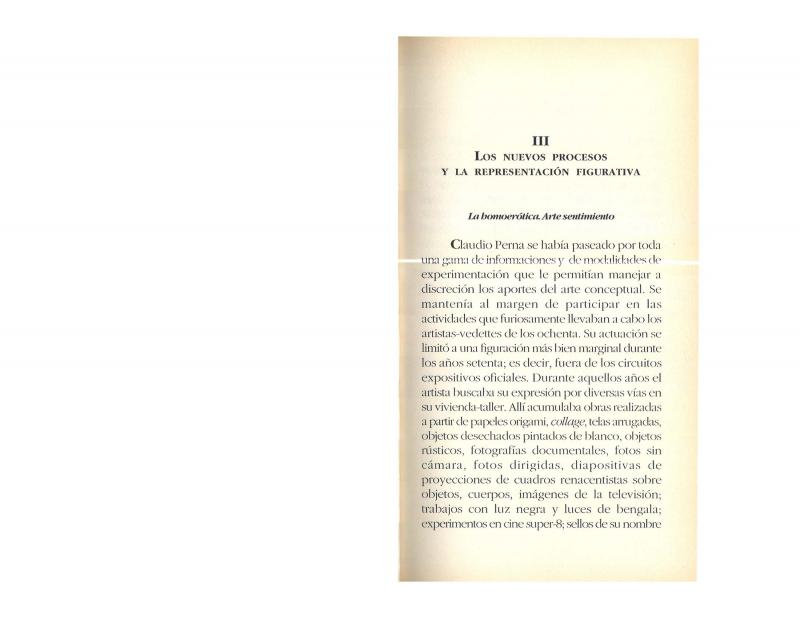This is the curatorial essay for Arte Social. Claudio Perna (Caracas: Galería de Arte Nacional, 2004), the first grand retrospective exhibition of the works of the Italian-Venezuelan artist (1938–97). In her five-part essay the curator Zuleiva Vivas (b. 1951) reviews Perna’s vast assortment of works and styles, and provides information about the artist and his life that helps to gain a broader understanding of his importance in Venezuelan and Latin American conceptual art circles, which in his case was distinguished by his social contribution. Vivas refers to him as an “all-round artist” and the creator of an “integrating humanism” through his many activities (geographer, teacher, and documentary maker), and his creative works and museum and educational projects (Multimuseo de Caracas, 1980) which were considered utopian in their day.
Vivas also discusses the Venezuelan 1970s generation—which includes Perna and Roberto Obregón, Eugenio Espinoza, Héctor Fuenmayor, Diego Barboza, and Ana María Mazzei, among others—who broke with the tradition they inherited to explore figurative art from a new perspective combined with a critical approach to the constructivism that had been around in Venezuela since 1951, and who advocated recycling landscape painting as a naturalist form of art. That led to an intellectualized and conceptualized form of landscape painting. This essay also attempts to organize Perna’s considerable legacy but does not set a strict time line. Vivas groups his works together, though not just by styles but according to their combinations and the resulting production of new meanings: from his crumpled papers and informalist white paintings (in the 1960s) to what followed, his photographs, super 8 films, photocopies, drawings, writings, live activities and the land art he produced in later years.
After Perna’s death in 1997, Vivas and a group of the artist’s friends created the Fundación Claudio Perna, which was devoted to the study and promotion of his intellectual legacy and his vast body of work. Based on her thesis on this subject, Vivas wrote a book, La desaparición de los límites. Claudio Perna: aportes para el estudio del arte latinoamericano actual (Caracas: Fundación Claudio Perna, 2000). She was the instigator of and curator for Perna’s first grand retrospective exhibition in August 2004, at the Galería de Arte Nacional de Caracas: Arte Social. Claudio Perna.
To read other articles and essays about this artist, see by Margarita D’Amico “1: Hoy es arte lo que no era” [doc. no. 1068360]; by Luis Enrique Pérez-Oramas “El autocurrículum de Claudio Perna, escultura social y novela hiperrealista” [doc. no. 1161917]; by Roberto Guevara “Claudio Perna o cómo ser libre en la marginalidad” [doc. no. 1080814]; by Elsa Flores “(Sin título) [Vivir quiere decir dejar huellas…]” [doc. no. 1063156]; by María Elena Ramos “Arte–idea–geografía” [doc. no. 1080766]; by Mara Comerlati “Claudio Perna. Lo fundamental es inventar. Este domingo expondrá más de cincuenta dibujos en la Sala Mendoza” [doc. no. 1068403]; by José Napoleón Oropeza “Claudio Perna. Disfruto el estilo de no tener estilo” [doc. no. 1067382]; and, by Lourdes Blanco “Claudio Perna: fotocopias” [doc. no. 1080715]. See also the following articles by Zuleiva Vivas: “Las opciones del tiempo para el nuevo espíritu” [doc. no. 1065674]; “Visión panorámica de las nuevas cartografías” [doc. no. 1157158]; “Los nuevos procesos y la representación figurativa” [doc. no. 1157174] and “Claudio Perna y el arte del pensamiento” [doc. no. 1163950].












